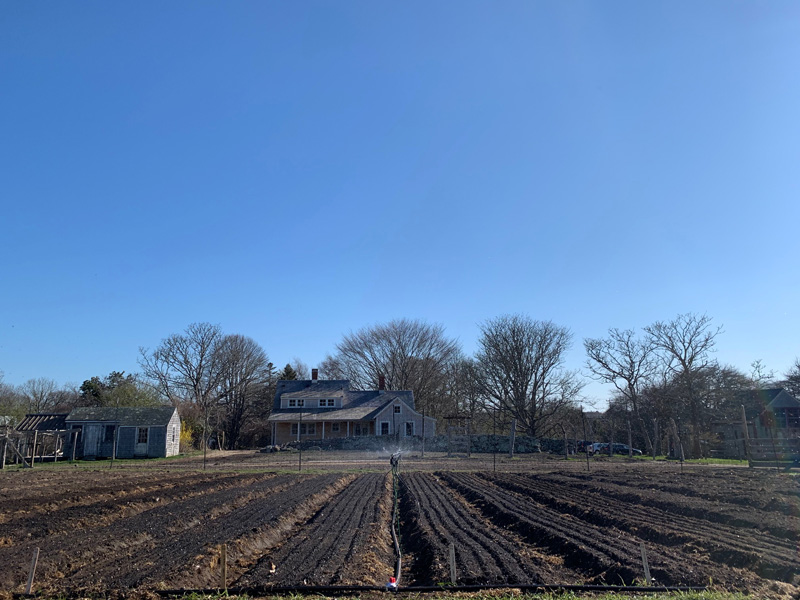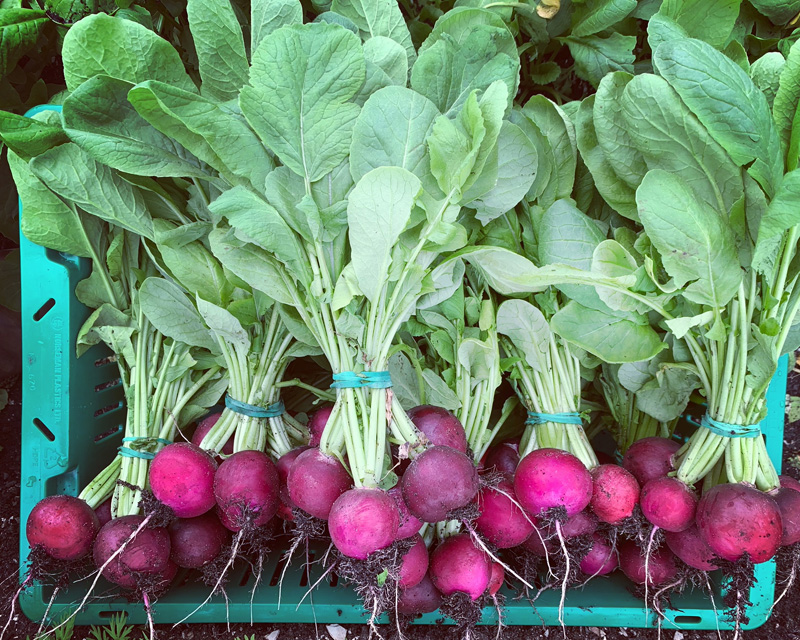Spring is an undeniably hopeful season on the farm, especially in the Northeast, it seems. It feels like a triumph, an instinctual moment of celebration for our survival through winter. And while we’re fortunate enough that the fear of the human species not surviving a Vineyard winter is no longer quite so relevant, the triumph that the first balmy March day brings still feels celebratory. And with all of the darkness that does still exist throughout our world, if we can concentrate on the light that spring brings, even just for a second, life is bound to look a whole lot brighter.
For farmers, that very brightness — that subtle yet obvious shift in light and warmth — is the great signifier that our work is also about to majorly shift. There’s an overwhelming sense of freedom of confinement from our spreadsheets, our countless Word documents, and lists of goals and strategies for an upcoming year. Instead, it’s time to tap into the muscle memories of seasons past — the creaky knees, the tight back, and the hands made weak by months of tapping on a sterile keyboard, rather than pulling the weeds that stain your fingers with soil. But soon enough, the movement brings that same spring sense of life back into our bodies, just as it does the daffodils, the tree buds, and the network of life beneath the surface of our fields. At Beetlebung Farm, where my boyfriend Nick and I manage the beautiful two acres of growing space, that life beneath us is what we hold highest in our effort to grow as diverse and nutritious a field of vegetables as we can. However, much like our vast and massively diverse oceans, the soil’s ability to hide the majority of its life where we can’t easily see it regretfully often leads most to overlook its importance.

Fortunately, some brilliant farmers and scientists before us have beautifully and convincingly advocated for this life beneath the surface, and the soil microbiome that it holds. Two of them, David Montgomery and Anne Biklé, wrote the book, “The Hidden Half of Nature,” the very writing that convinced me to choose farming as a career in the first place. The book takes the couple through the discovery that our physical bodies, the soil, and the world are, more than anything, driven and dominated by networks of microorganisms. They do so through the seemingly simple task of tending to a backyard garden, all the while drawing parallels to their personal health journeys. “In medicine, as in agriculture, what we feed our soils — inner and outer — offers a prescription for health forged on the anvil of geologic time,” they write.
Essentially, the world can be seen as a massive cycle of feeding to be fed, and primarily through the act of decomposition. We feed the bacteria and fungi in our soils things that they in turn decompose, then release as useful forms of nutrients for our plants to absorb. Our plants grow, we harvest, and we eat. That food makes its way into our bodies, where it is, again, then processed by microbial life. Within the gut this time, which works to digest, decompose, and provide essential nutrients to the human body. If the right microbial life thrives, so too do our bodies, so too do our plants. And then finally, we feed each other. We open our farmstand, we share what we can with our community, and we cook for each other. Just as our physical bodies must be fed, so too must our souls. This intersection, the one between our own bodies, the soil, food, and the feeding of one another is what convinced me that farming was worth devoting a life to.

So when Nick, Seth, Theo and I (the team of farmers that make up Beetlebung Farm) begin to prepare for another growing season ahead, we ask ourselves first, What does the soil need, and how do we feed it so that it can feed us? Only after that question do thoughts of seed orders, harvest tools, and packaging come into play. Because without our precious soil, its fungal networks, and its seemingly endless life forms, to us, a farm is nothing. Here, we choose compost over synthetic fertilizers, we choose beneficial bugs over pesticides, and we choose a system of low- to no-till bed prep over the constant pulverizing of soil structure. We do our best to protect and support the systems within the soil, so intricately established long before we even existed. The words of my favorite book ring loudly and often: “Put bluntly,” Biklé writes, “many practices at the heart of modern agriculture and medicine — two arenas of applied science critical to human health and well-being — are simply on the wrong path. We need to learn how to work with rather than against the microbial communities that underpin the health of plants and people.”
The light that spring brings can leave us feeling more optimistic than ever. There is suddenly obvious life emerging everywhere. But what is obvious only begins to crack the surface of what is important, and as a farmer whose priority it is to protect the unseen, I urge you to think deeper.

